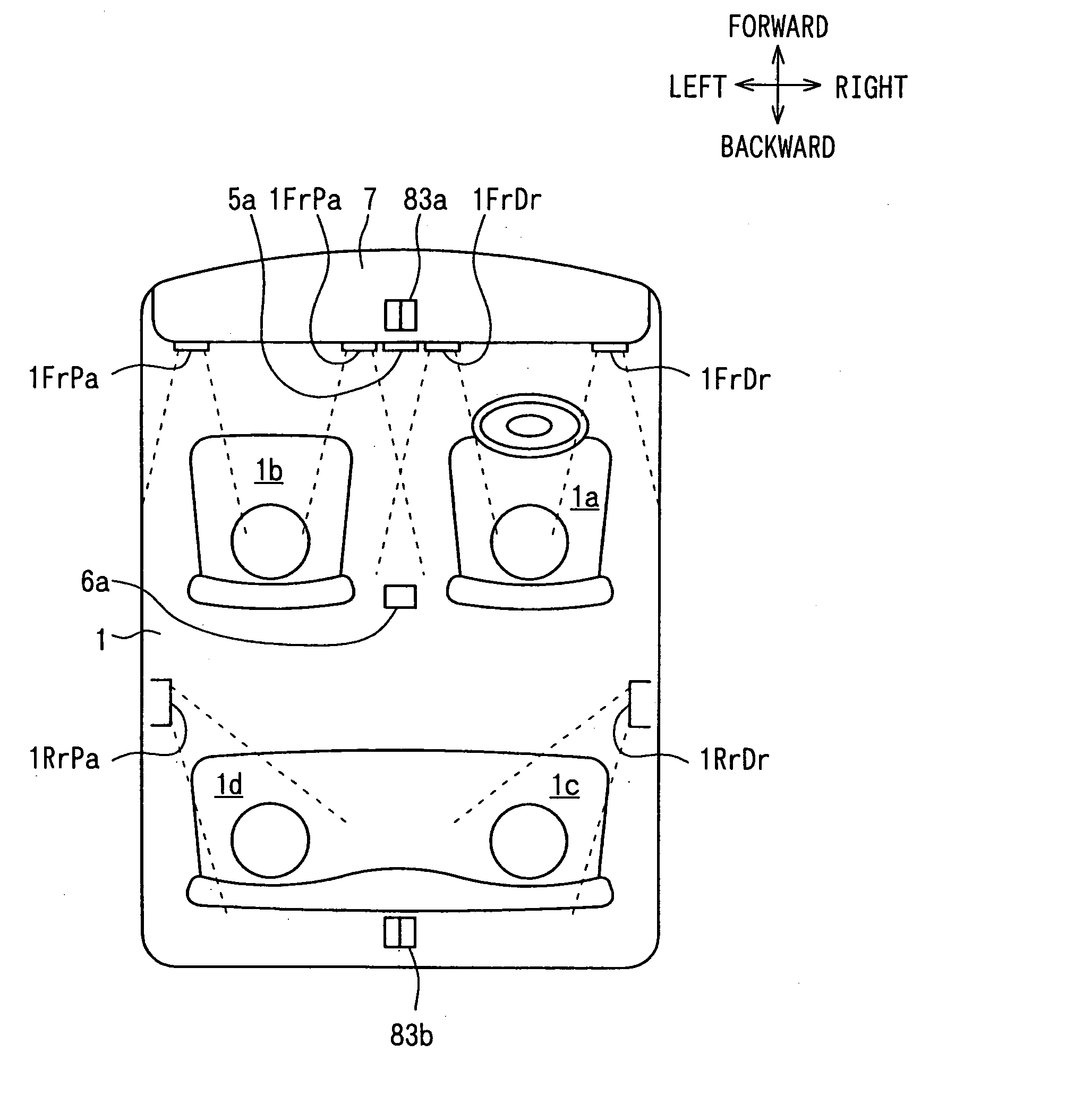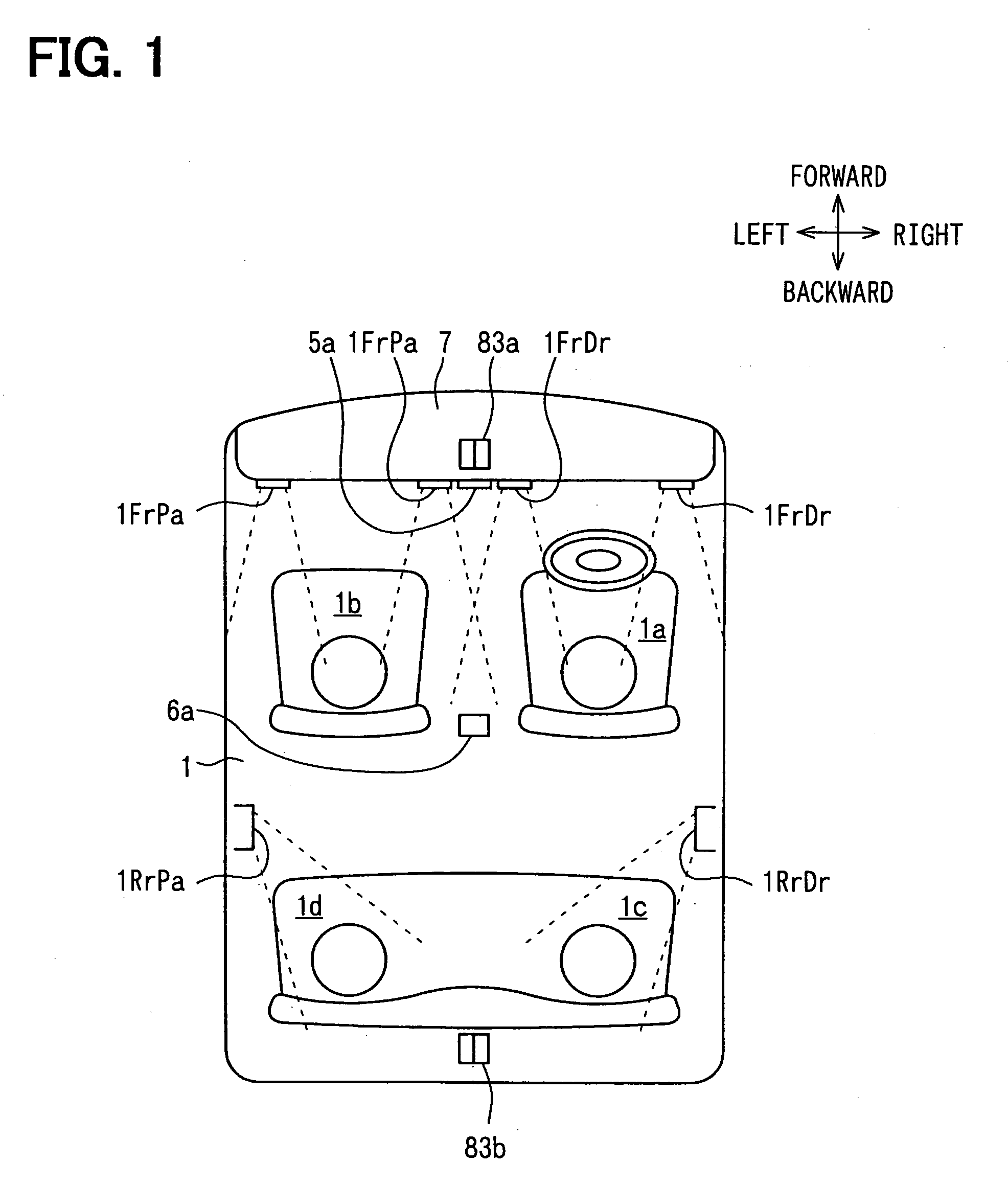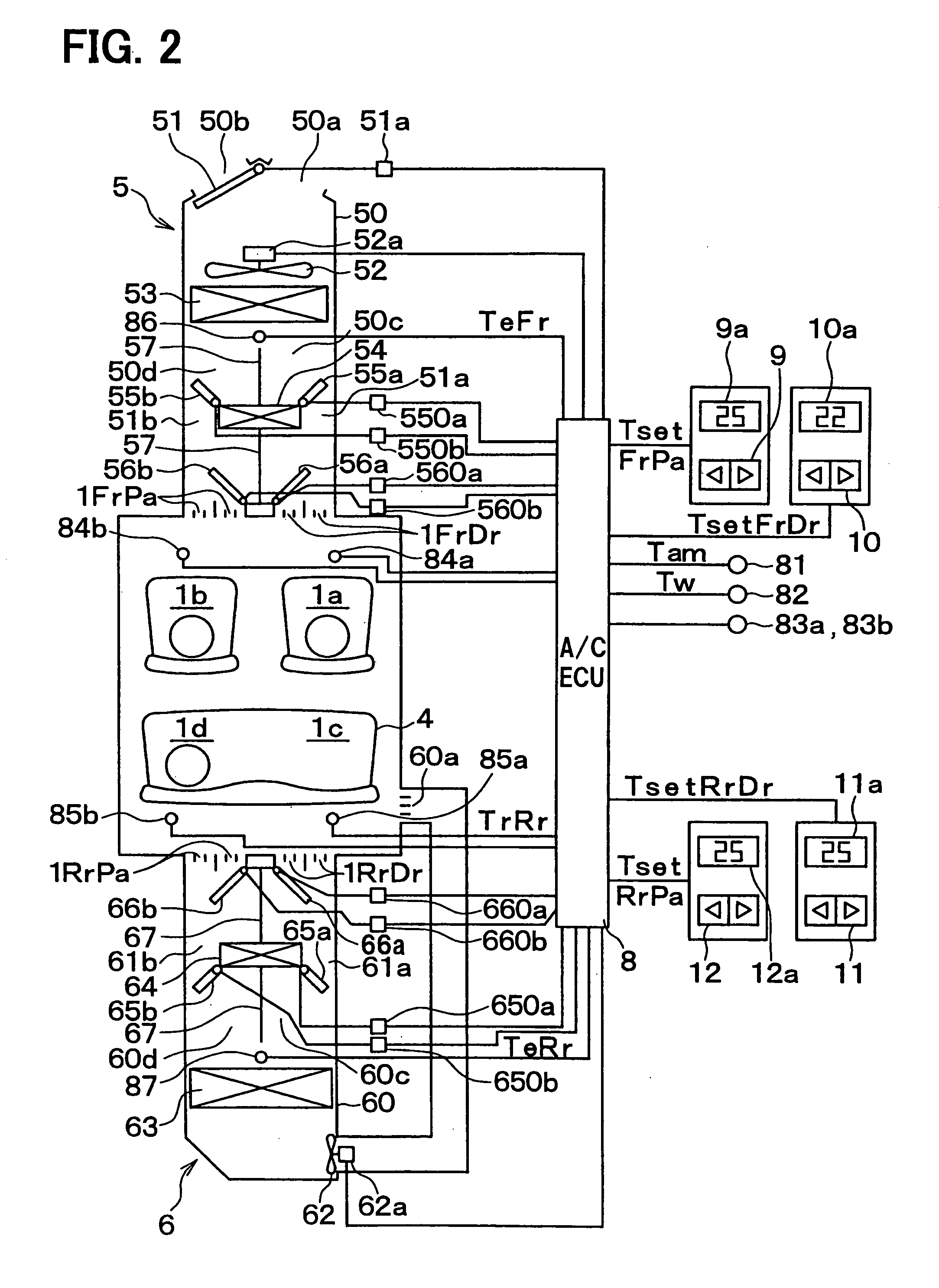Air conditioner for vehicle
a technology for air conditioners and vehicles, applied in the direction of temperatue control, process and machine control, instruments, etc., can solve the problems of inability to appropriately control the temperature of the air blown out to the rear seat right inability to accurately calculate the target blowing out temperature of the rear seat left-hand side air conditioning zone, etc., to achieve accurate calculation
- Summary
- Abstract
- Description
- Claims
- Application Information
AI Technical Summary
Benefits of technology
Problems solved by technology
Method used
Image
Examples
first embodiment
[0029]FIGS. 1 and 2 show a first embodiment of an air conditioner for a vehicle in the present invention. In this embodiment, the present invention is applied to an air conditioner for a vehicle for independently controlling each of air-conditioning operations of air conditioning zones 1a, 1b, 1c, 1d located leftward and rightward on the front seat side and located leftward and rightward on the rear seat side within a vehicle compartment interior 1 (passenger compartment).
[0030]FIG. 1 is a schematic diagram showing the arrangement of the air conditioning zones 1a, 1b, 1c, 1d. The air conditioning zone 1a is located on the right-hand side in the front seat air conditioning zone. The air conditioning zone 1b is located on the left-hand side in the front seat air conditioning zone. The air conditioning zone 1c is located on the right-hand side in the rear seat air conditioning zone. The air conditioning zone 1d is located on the left-hand side in the rear seat air conditioning zone. T...
second embodiment
[0145] In the above-described first embodiment, the inside air temperature sensors 84a, 84b, 85a, 85b are respectively adopted correspondingly to the air conditioning zones 1a, 1b, 1c, 1d, and the target blowing-out temperature is calculated every air conditioning zone by using the detected inside air temperatures of these inside air temperature sensors 84a, 84b, 85a, 85b. However, instead of this construction, a case where only two inside air temperature sensors are arranged will be explained in this second embodiment. One inside air temperature sensor is arranged leftward or rightward in the front seat and the other one inside air temperature sensor is arranged leftward or rightward in the rear seat.
[0146] A case where the inside air temperature sensor 84a is arranged in the air conditioning zone 1a of the front right-hand side seat and the inside air temperature sensor 85a is arranged in the air conditioning zone 1c of the rear right-hand side seat and no inside air temperature ...
third embodiment
[0154] In the above second embodiment, the inside air temperature every air conditioning zone is calculated by the estimation and the target blowing-out temperature is calculated every air conditioning zone by using this calculated inside air temperature. However, instead of this construction, a case where one inside air temperature sensor is used will be explained in this third embodiment.
[0155] For example, it is set that only the inside air temperature sensor 1a of the air conditioning zone 1a of the front seat right-hand seat side is arranged and no inside air temperature sensor is arranged in the air conditioning zones 1b to 1d. In this case, the air conditioning ECU 8 calculates the respective target blowing-out temperatures TAO_fr, TAO_fl, TAO_rr, TAO_rl of the air conditioning zones 1a, 1b, 1c, 1d on the basis of the following formulas 12 to 15 (estimating means). TAO_fr=KSET×TSET_fr-KR×TR_fr-KAM×TAM-KS×TS_fr+C+KLR_F×(TSET_fr-TSET_f1)(formula 12)TAO_f1=KSET×TSET_f1-K...
PUM
 Login to View More
Login to View More Abstract
Description
Claims
Application Information
 Login to View More
Login to View More - R&D
- Intellectual Property
- Life Sciences
- Materials
- Tech Scout
- Unparalleled Data Quality
- Higher Quality Content
- 60% Fewer Hallucinations
Browse by: Latest US Patents, China's latest patents, Technical Efficacy Thesaurus, Application Domain, Technology Topic, Popular Technical Reports.
© 2025 PatSnap. All rights reserved.Legal|Privacy policy|Modern Slavery Act Transparency Statement|Sitemap|About US| Contact US: help@patsnap.com



